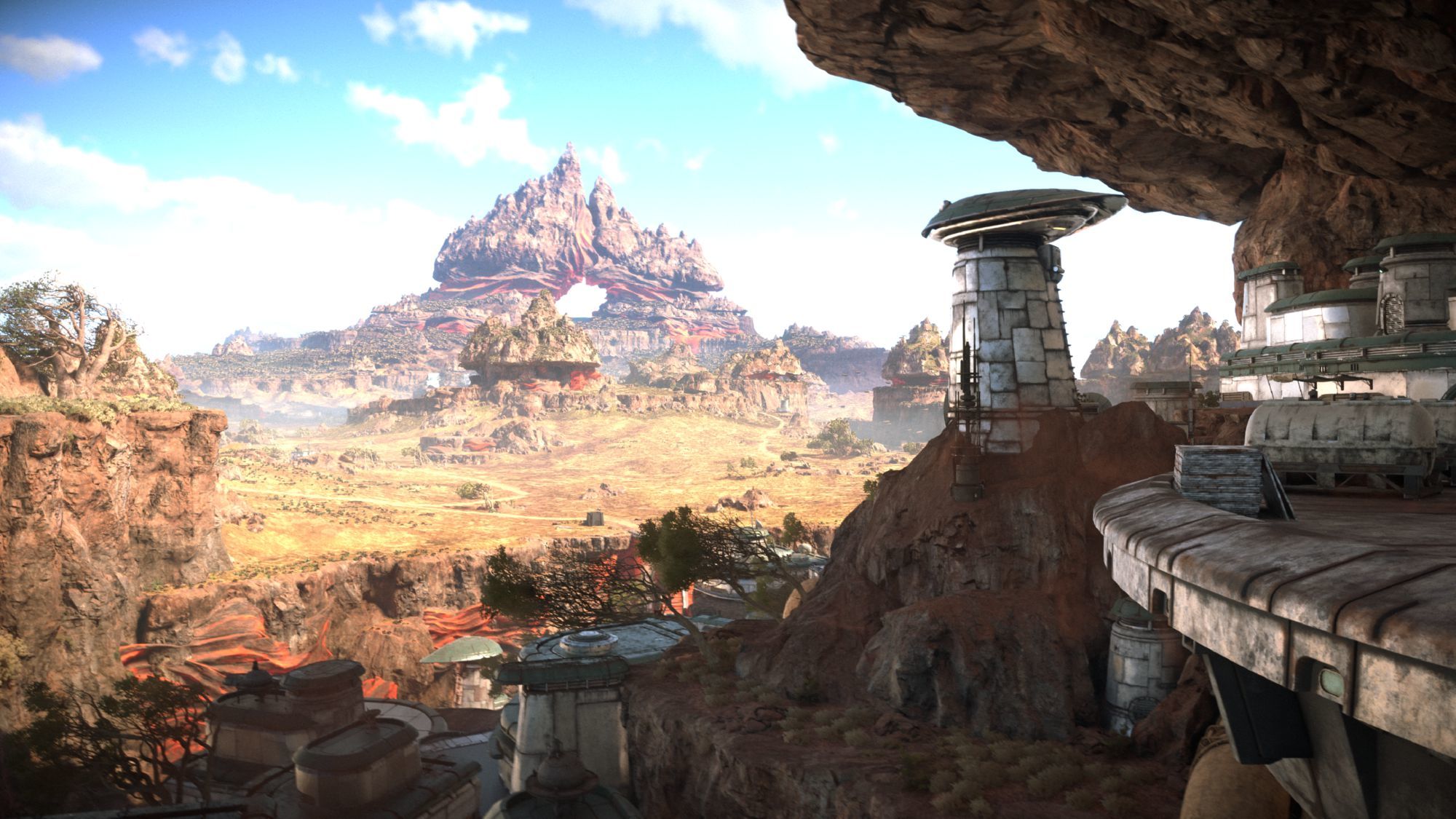
Star Wars Outlaws is the latest game in the never-ending franchise and as it's published by Ubisoft, with Massive Entertainment handling the development, it should come as no surprise to note that it's a big open-world third-person offering.
It's not like Assassin's Creed Valhalla, though, as the open and habited regions are more restricted in scope and scale, and more akin to Avatar: Frontiers of Pandora. That's perhaps not a surprise when one realises Massive Entertainment also made that game, and both it and Star Wars Outlaws use the same Snowdrop engine.
When it comes to GPU tech, you get the full gamut of upscalers and frame generation systems (DLSS, FSR, and XeSS), along with ray tracing being permanently in use for lighting, shadows, and reflections. There are also more graphics options than I've seen in a game for a very long time—the settings you can configure outside of the standard presets—and that's both a good thing and a bad thing, as I'll explain later.
It's important to note that all of the following is based on running a preview version of Star Wars Outlaws and the performance figures that you'll see below might not be 100% indicative of the final release, when it's launched August 30.
For example, enabling FSR 3 frame generation induces all kinds of rendering issues and there's a fairly substantial memory leak that kicks in after a long play time, resulting in the game sucking up all your VRAM, dropping the frame rate, and forcing textures to lower in resolution. Such things are normal in preview samples of games and the review notes clearly show that Ubisoft is aware of the issues so hopefully they will all be resolved in time for the launch.
Star Wars Outlaws performance: Urban
To examine the overall performance, I used a range of gaming PC hardware, though time constraints limited the scope. Star Wars Outlaws looks like the kind of game that could really suit a handheld gaming PC, so I tested it on an Asus ROG Ally X, along with an Acer Nitro V 15 RTX 4050 gaming laptop, plus some desktop configurations that are reasonable matches to Ubisoft's system requirements (for the graphics cards, at least).
Performance figures were taken in two locations, as there's quite a difference in how well the game runs, depending on where you are and what you're doing. The first set of results are from walking around on foot in Mirogana city and the second results are from zooming across the land on a speeder in the Mirogana valley, both on the Toshara planet.
The overall frame rates in Mirogana city aren't super high but generally, they're quite consistent. Using the ultra graphics setting hits most systems pretty hard so unless you've got a really high-end gaming PC, you're better off just sticking to the high preset, if you don't want to use upscaling.
It's a shame the ROG Ally X is unable to run the game at 1080p with the low quality preset and hit 30 fps, as Star Wars Outlaws feels like the ideal game for such a platform. The RTX 4050 laptop and RX 5700 XT also struggle, although it is playable enough up to the high preset. All the desktop PCs deliver acceptable performance as per their target resolutions, though even the RTX 4080 Super is pushed hard with 4K and the Ultra preset.
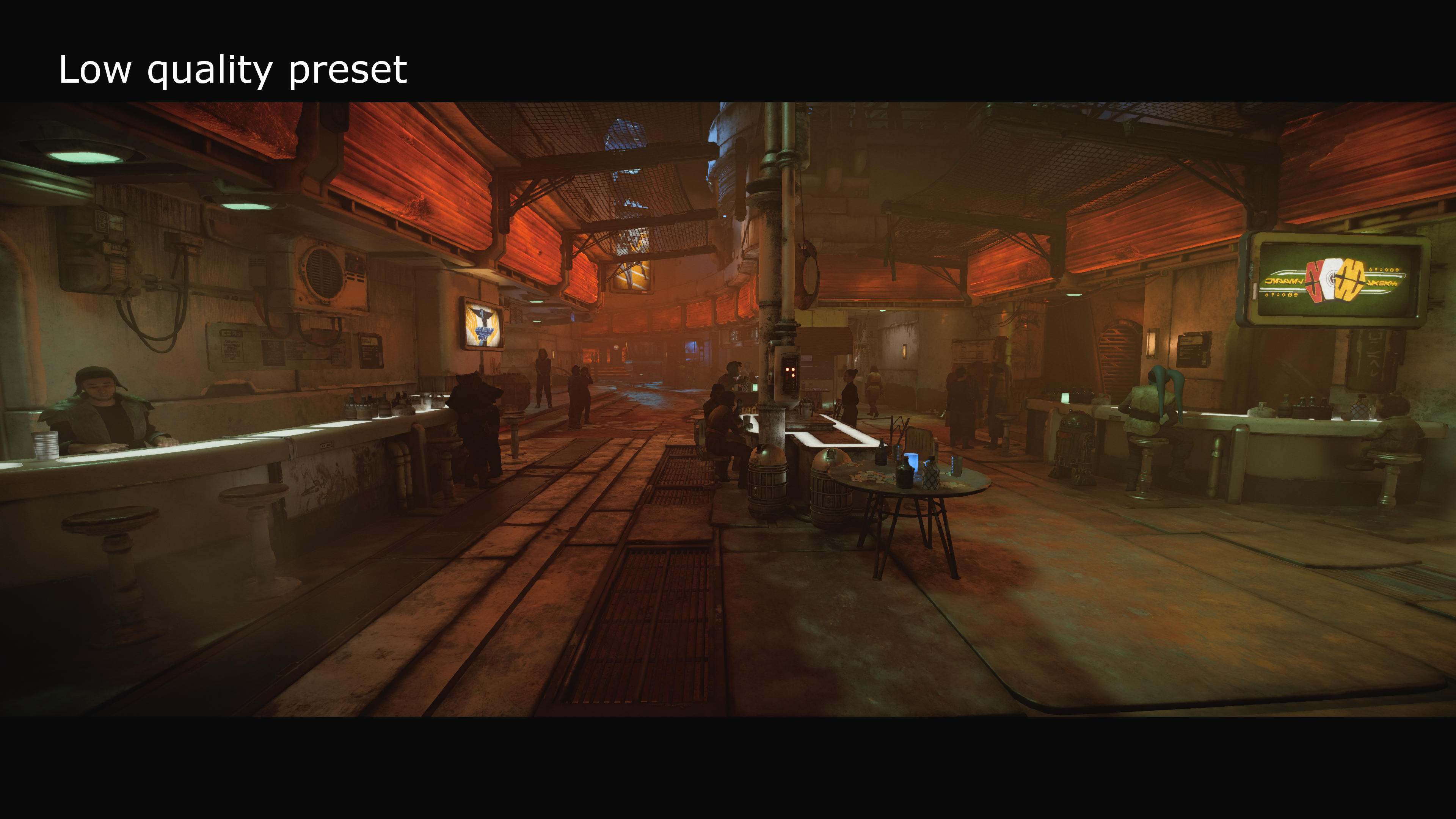
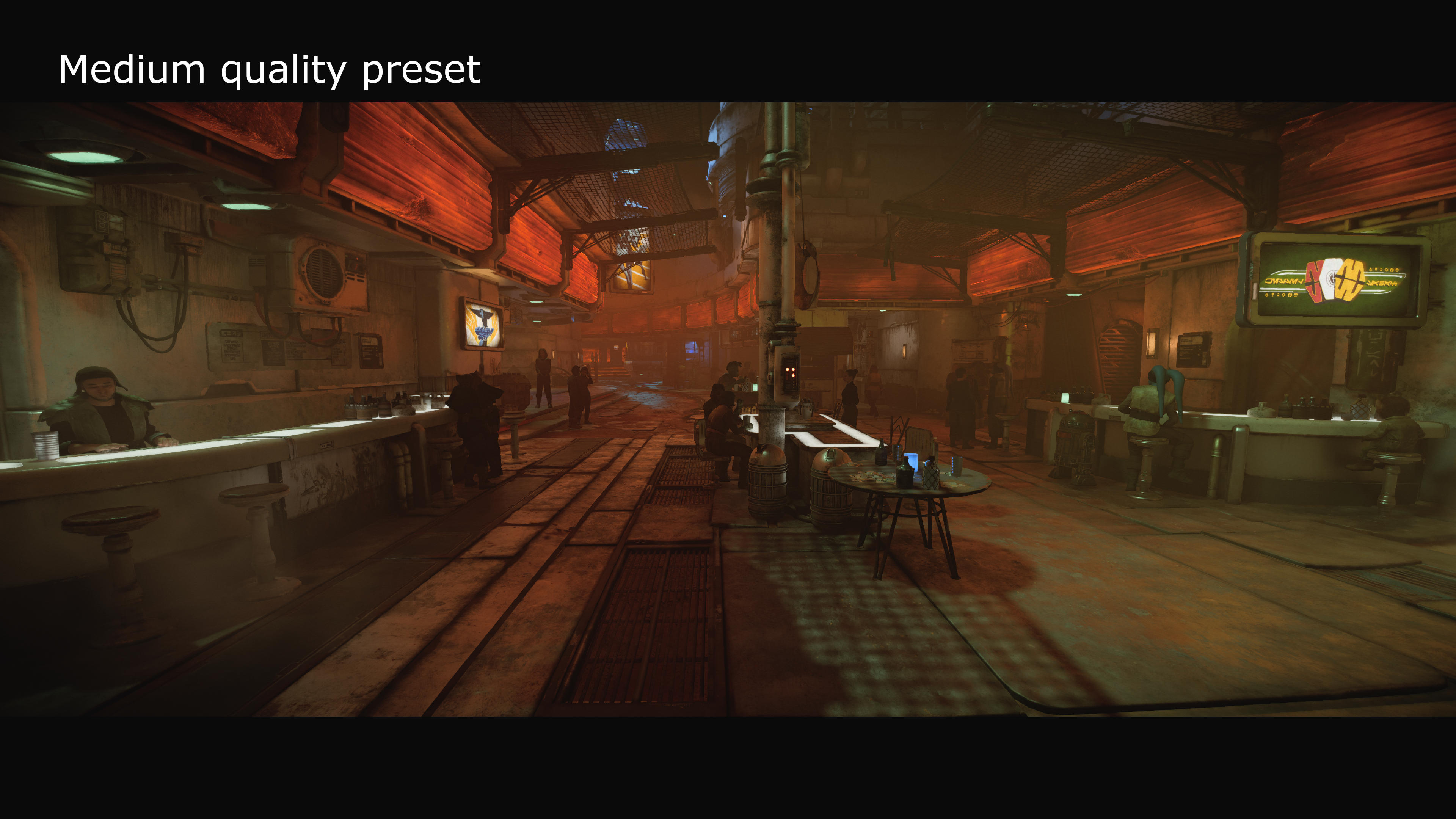
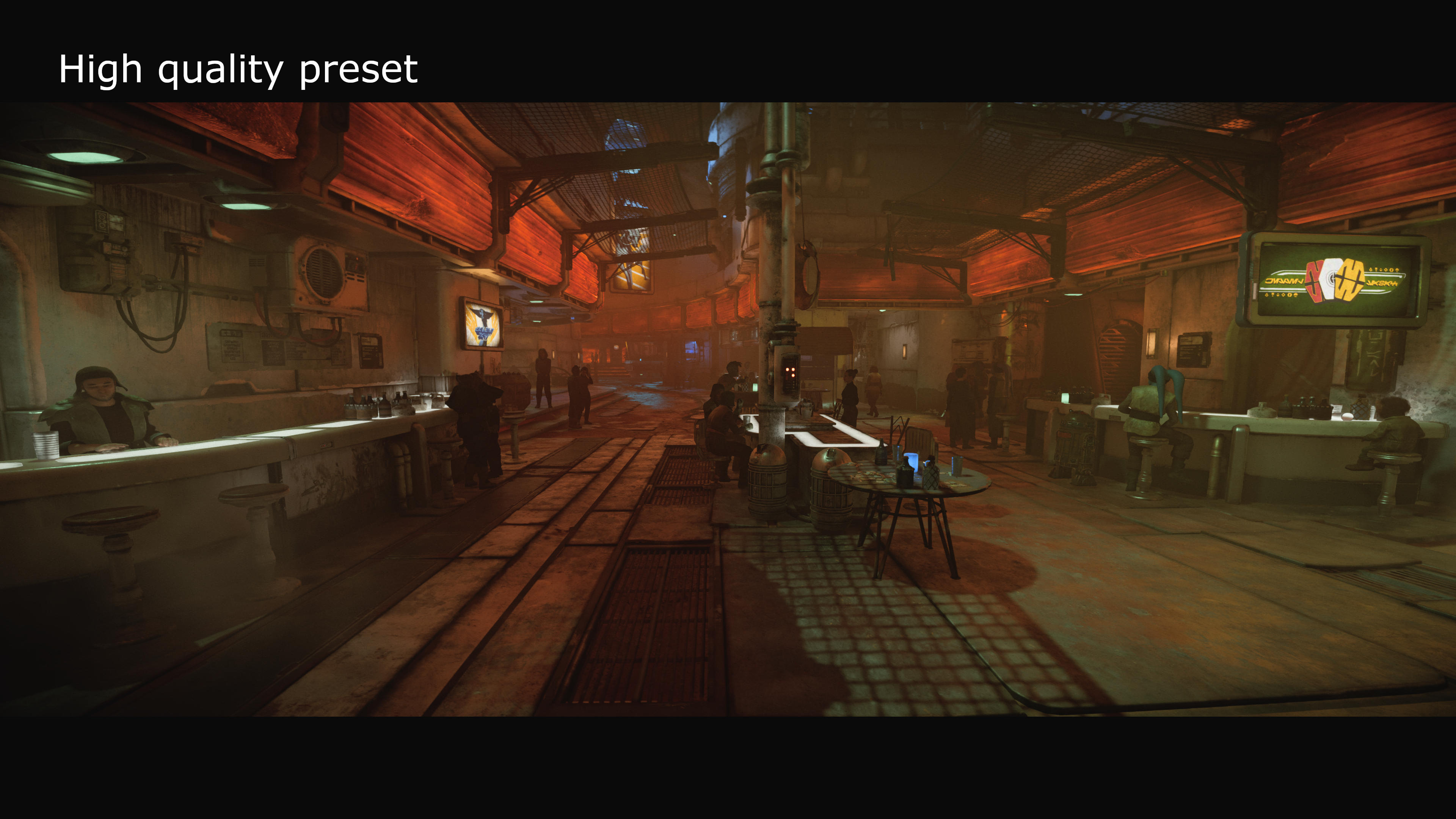
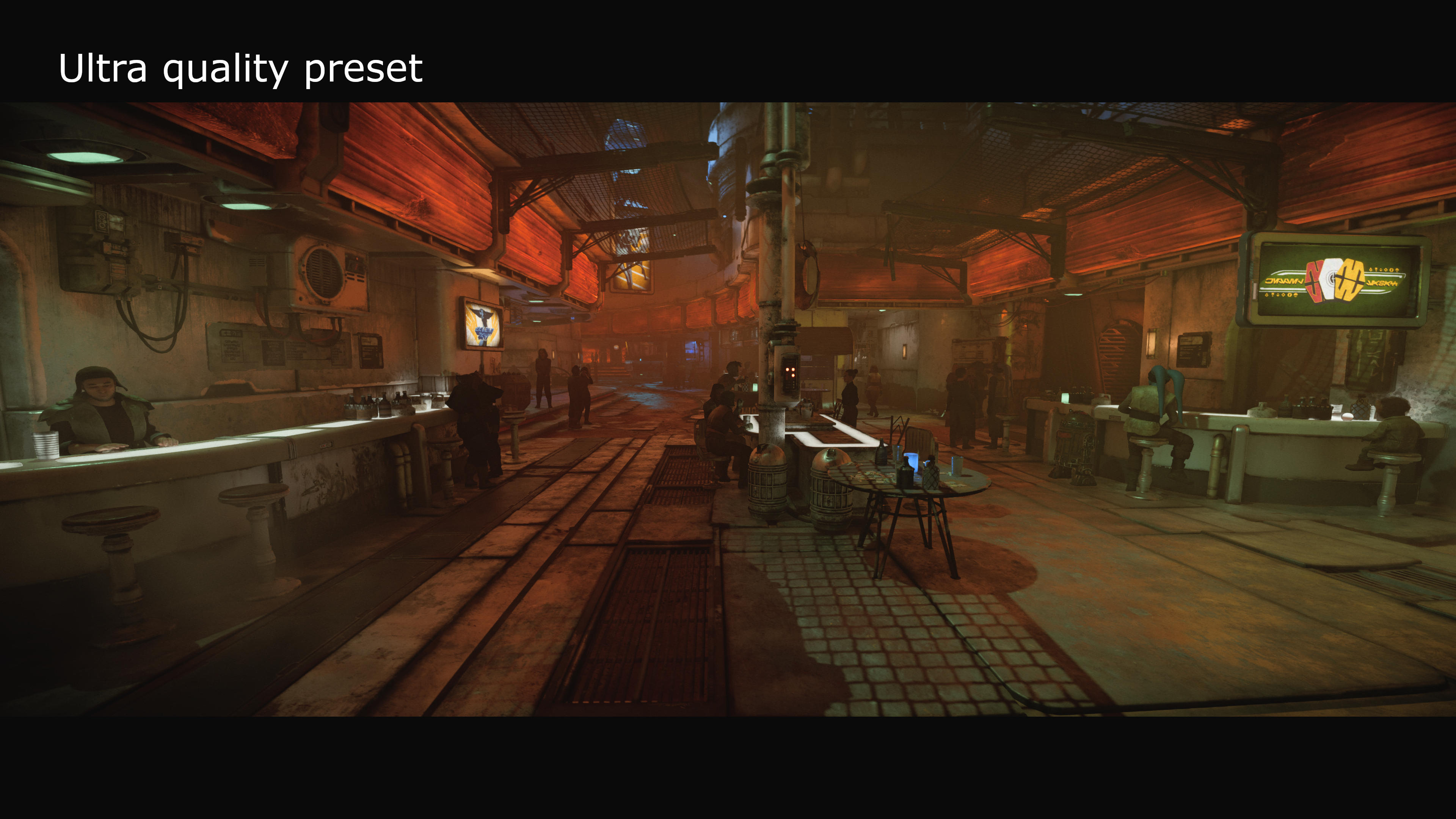
Traversal stutter (where you cross a boundary in the world that forces the engine to load in some new assets) is present and sometimes particularly bad when entering a new area for the first time, though it pretty much disappears with repeated entries. Shader compilation stutter only rears its head now and then, though, as the majority of that seems to take place when you load a save (or during some in-game or pre-rendered cutscenes) as indicated by heavy spikes in CPU activity.
If you're looking at the screenshots above and wondering what's with the black bars, the game defaults to a 'cinematic 21:9' look, which perhaps makes Star Wars Outlaws the first game to really give ultrawide monitor owners the best experience. Disabling this fills out the screen but squashes in the field of view. It's worth leaving it on as you stop noticing the bars pretty quickly.
Star Wars Outlaws performance: Open-world
While the results below don't look all that different to the city runs, the open-world performance is certainly more varied. Star Wars Outlaws on the ROG Ally X is just as bad as it is in the city and it's a similar story for the RTX 4050 laptop. In the case of the latter, it's possibly due to the 6 GB of VRAM forcing more asset streaming to take place.
Star Wars Outlaws will use as much VRAM as it can, although never more than the amount the graphics card has, even at higher quality settings. That said, more is certainly better, but at least the engine won't jam it full and then crash into a 'lack of memory' issue—it makes for a pleasant change to play a modern game that seems to manage its assets well. Mind you, all of the test PCs sport a fast PCIe 4.0 NVMe SSD and I should imagine one could experience some stutters with slower drives.
And on the subject of stutters, the open-world area does produce more pronounced traversal stutters than the city location but only when travelling across a large portion of the map. Sometimes it's quite pronounced but the longer you spend whizzing about the world on your speeder, the smaller the impact becomes.
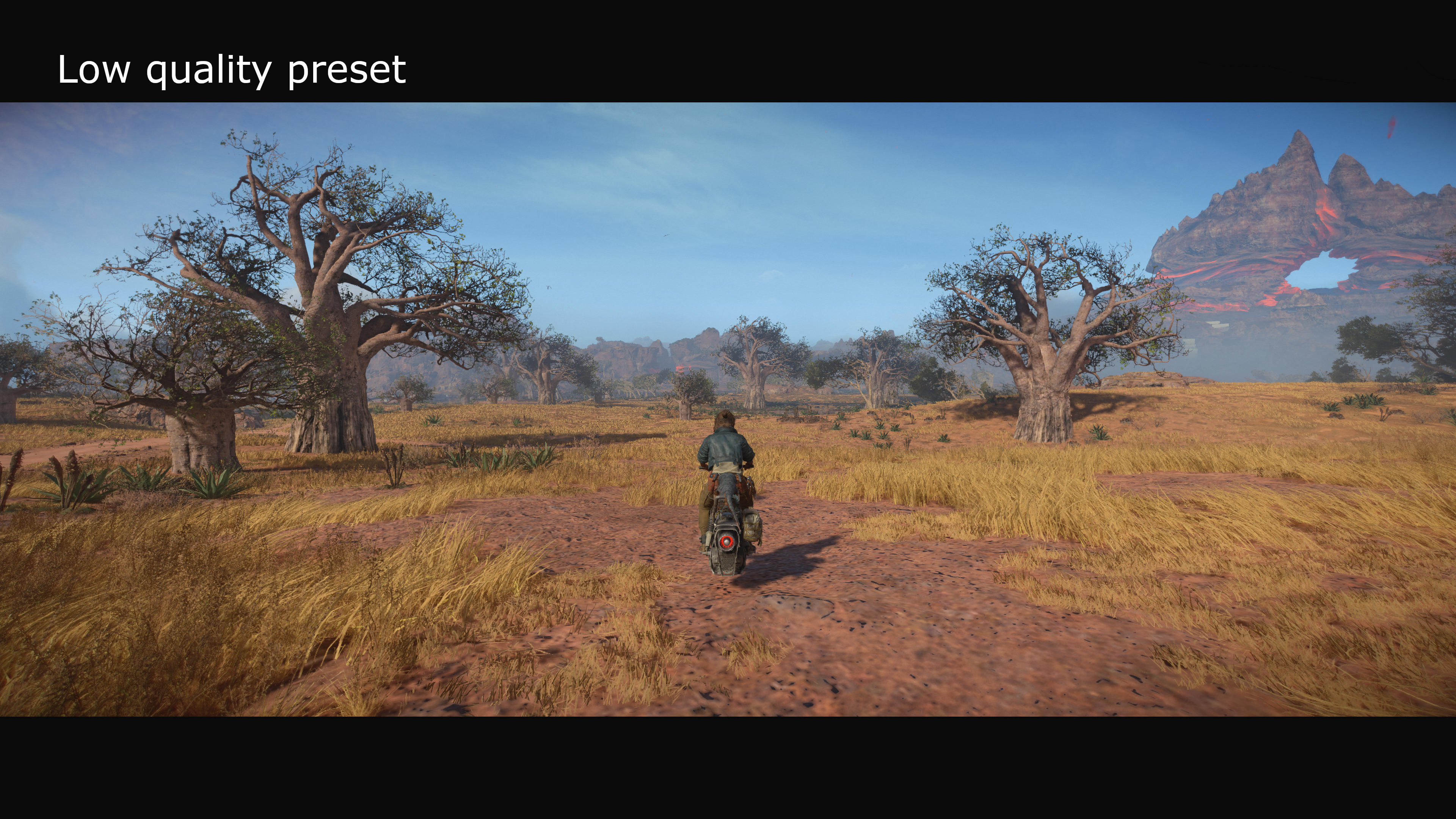
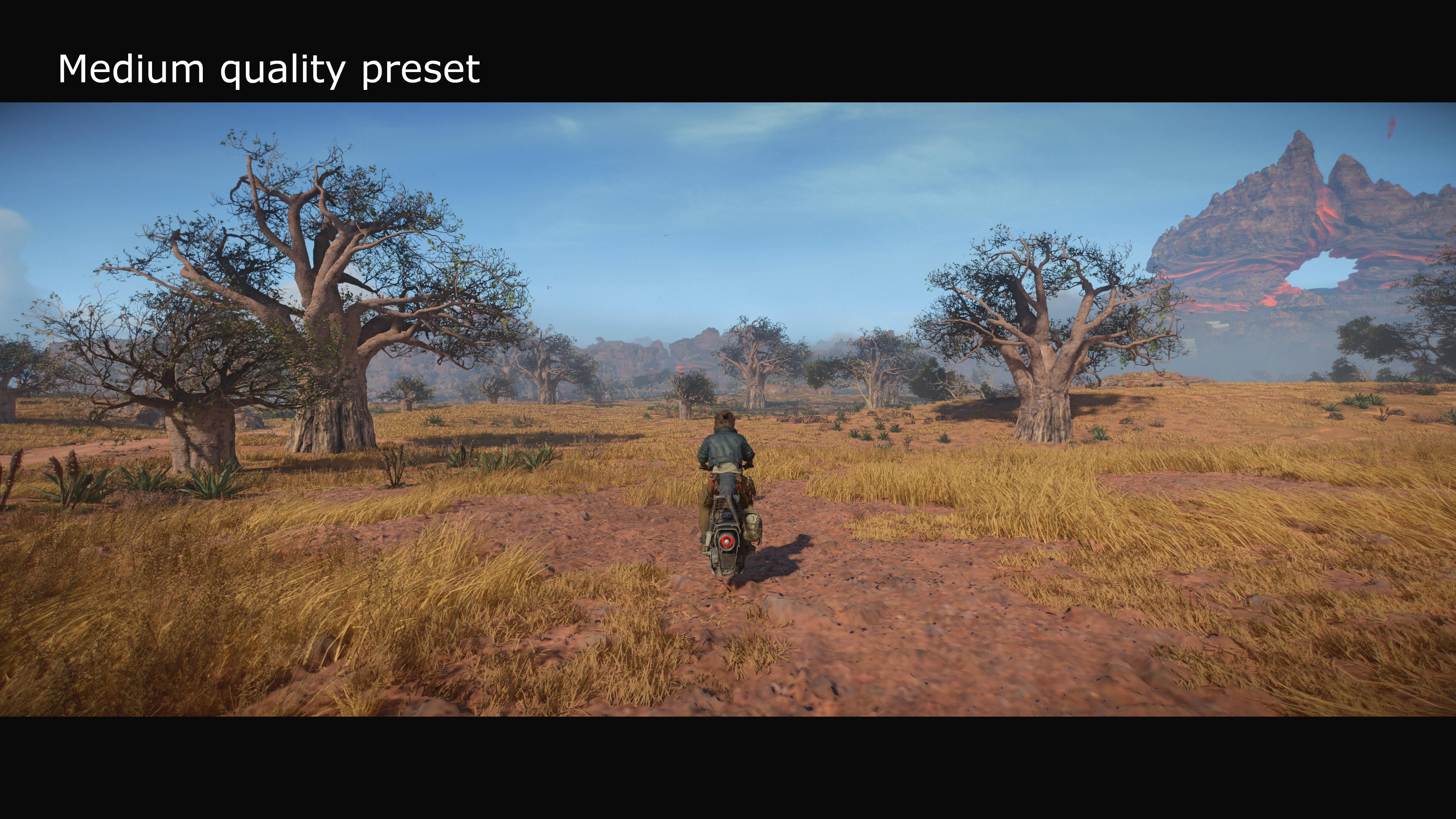
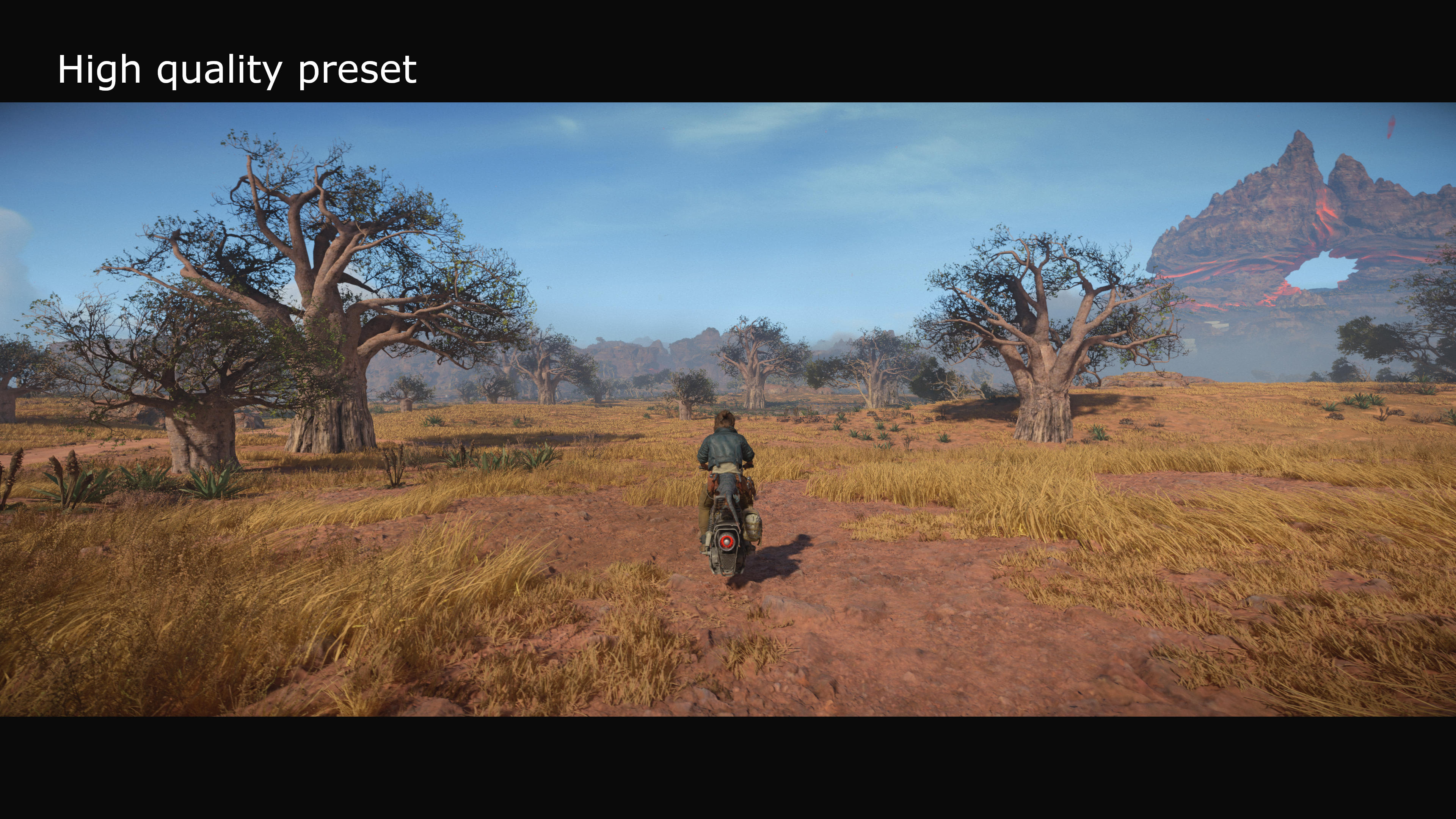
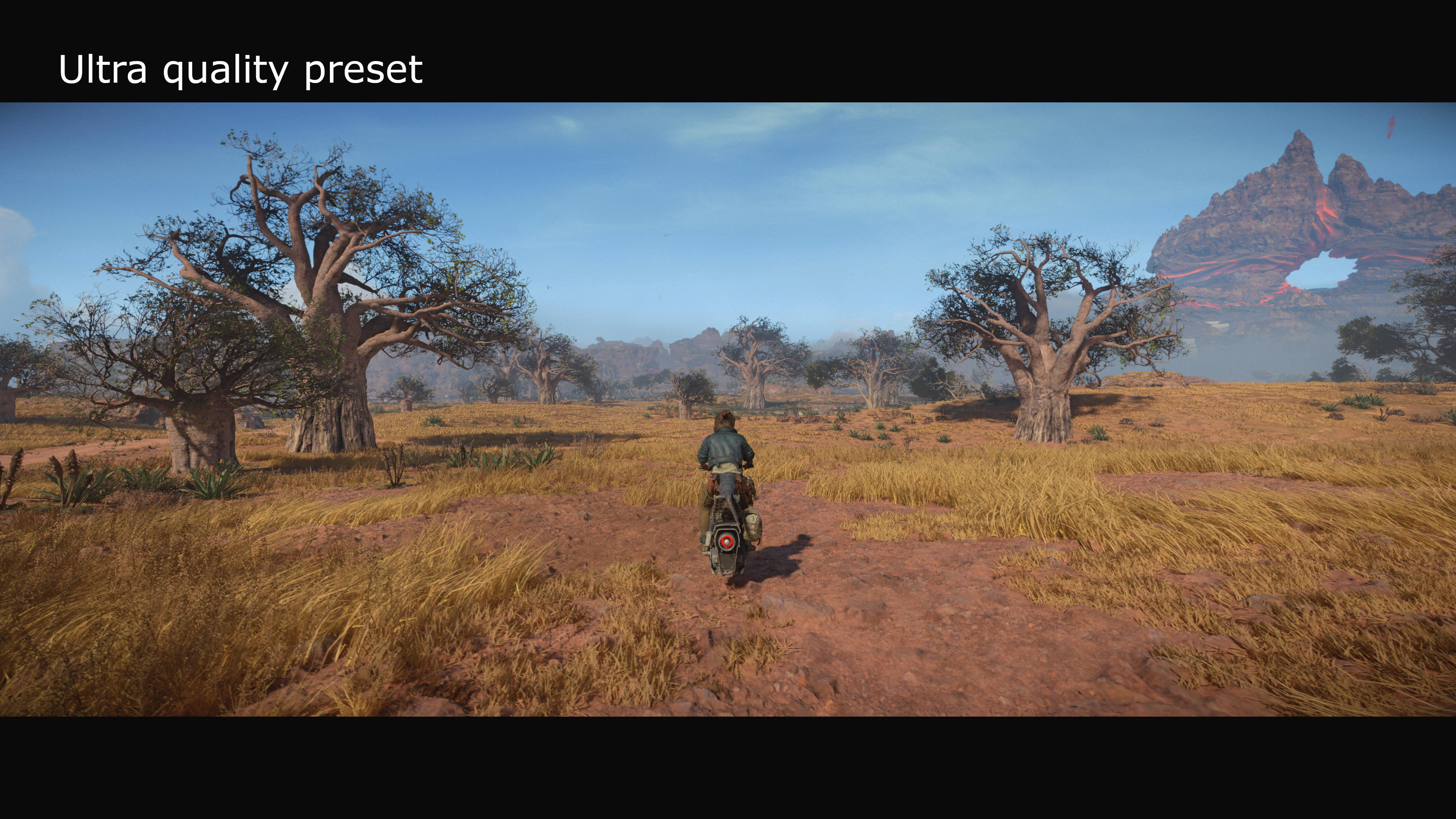
I'm not including any upscaling results for the open-world test, simply because you get the same kind of performance increases as seen in the city location. For mid-range and lower-end GPUs, upscaling doesn't help out as much as you'd like and frame generation is the saving grace for such chips. The more powerful your GPU, the bigger the improvement you'll see when using DLSS, FSR, or XeSS.
With regards to the CPU, the game engine for Star Wars Outlaws generates one primary thread and lots of ancillary ones, though not in a particularly heavy way, and if you have a CPU that supports 12 or more threads, then you'll be fine. For example, the Core i7 14700KF runs the game with one P-core averaging 50% utilisation and the others around 37% in the city location. It was a similar situation with the Ryzen 5 5600X, but slightly higher per-core utilisations.
In short, Star Wars Outlaws is primarily a GPU-limited game.
Star Wars Outlaws upscaling performance
Since all of the above results are without any upscaling or frame generation applied, things will naturally improve with those enabled, so if you're planning on using ultra graphics settings at 1440p or 4K, then DLSS, FSR, or XeSS are an absolute must.
The first thing to note is that upscaling doesn't help the ROG Ally X one bit and unfortunately, Star Wars Outlaws is unplayable on the handheld device, in this preview version at least. Using FSR 3 Performance and the buggy frame generation, it barely averages 27 fps in the city area and apart from the fact that it looks horrendous in this mode, the input lag is so bad it's like booking a simple move two weeks in advance.
For the other systems, upscaling is worth using to raise the 1% lows to an acceptable level and even if the baseline performance is fine, it's worth applying them anyway, as you can use a 100% render scale to get much nicer anti-aliasing than the default TAA (temporal anti-aliasing) method.
In the review copy notes, Ubisoft recommended that DLSS and FSR frame generation shouldn't be used in the review build as neither implementation was working as intended but in the spirit of the game, I fired them up anyway. In terms of performance, they both work really well and add very little input latency, for most platforms, but AMD's system induced awful rendering artefacts. Hopefully, both systems will work perfectly when the game publicly launches. Hopefully…
So that's how the game runs in a busy city location but what about the wider world, where you can use your speeder to whizz about and explore other locations?
Graphics settings
As mentioned earlier, Star Wars Outlaws sports a comprehensive array of graphics options to tweak and mess about with. That means you should be able to find a configuration that ensures the game will work as best as possible on your gaming PC. However, the sheer number of options means you could spend longer messing about with these than actually playing the game.
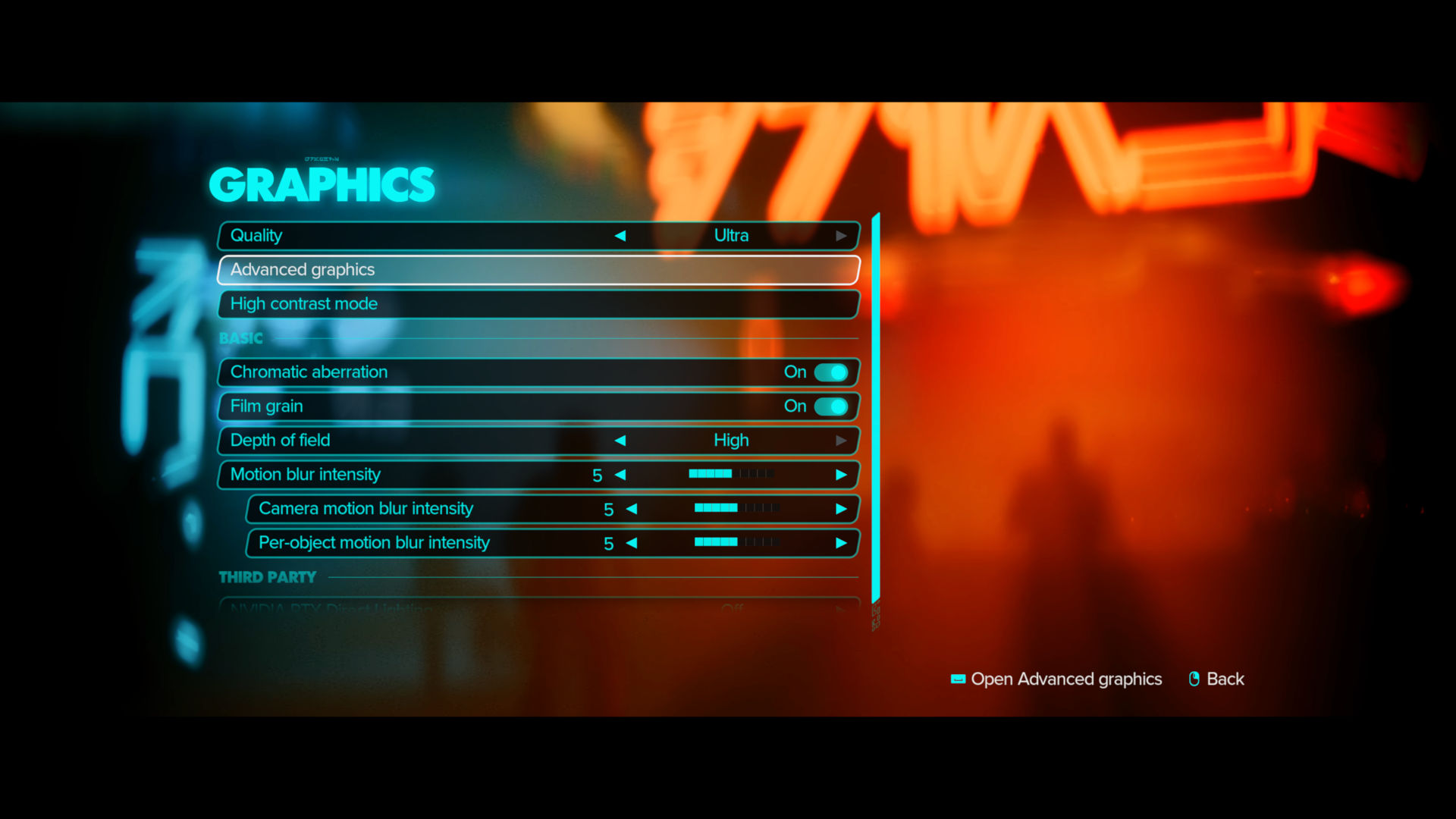
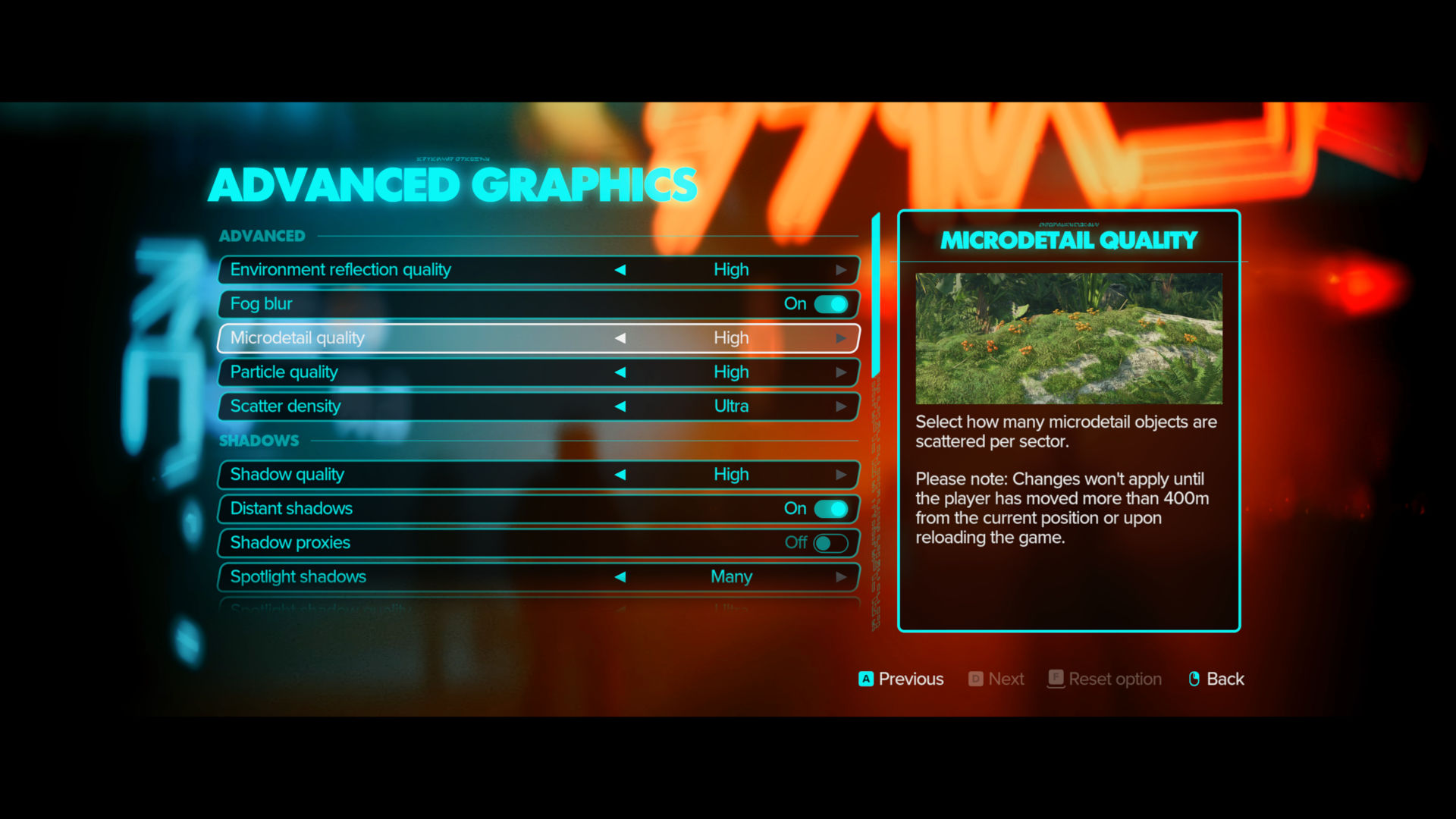
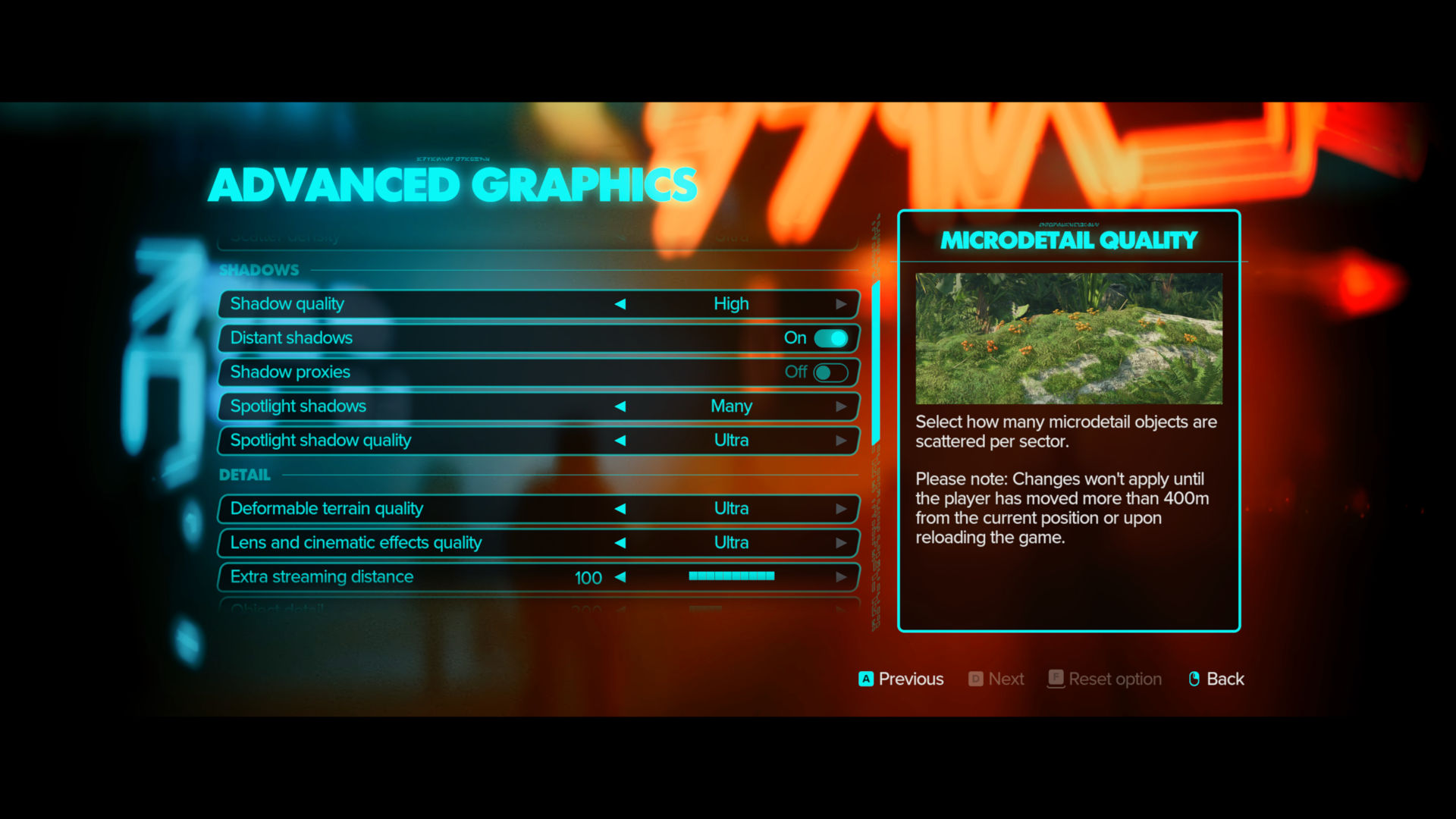
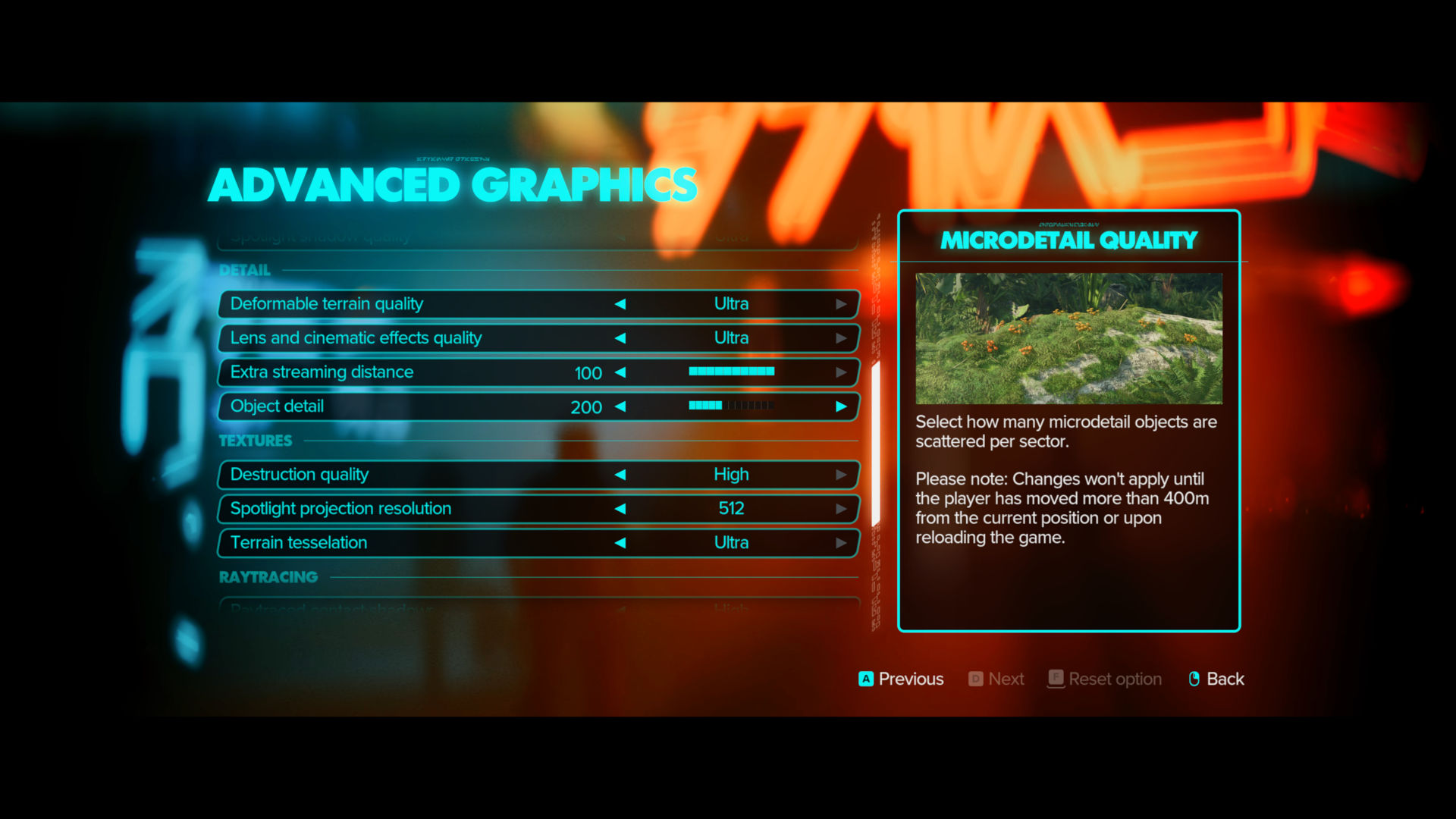
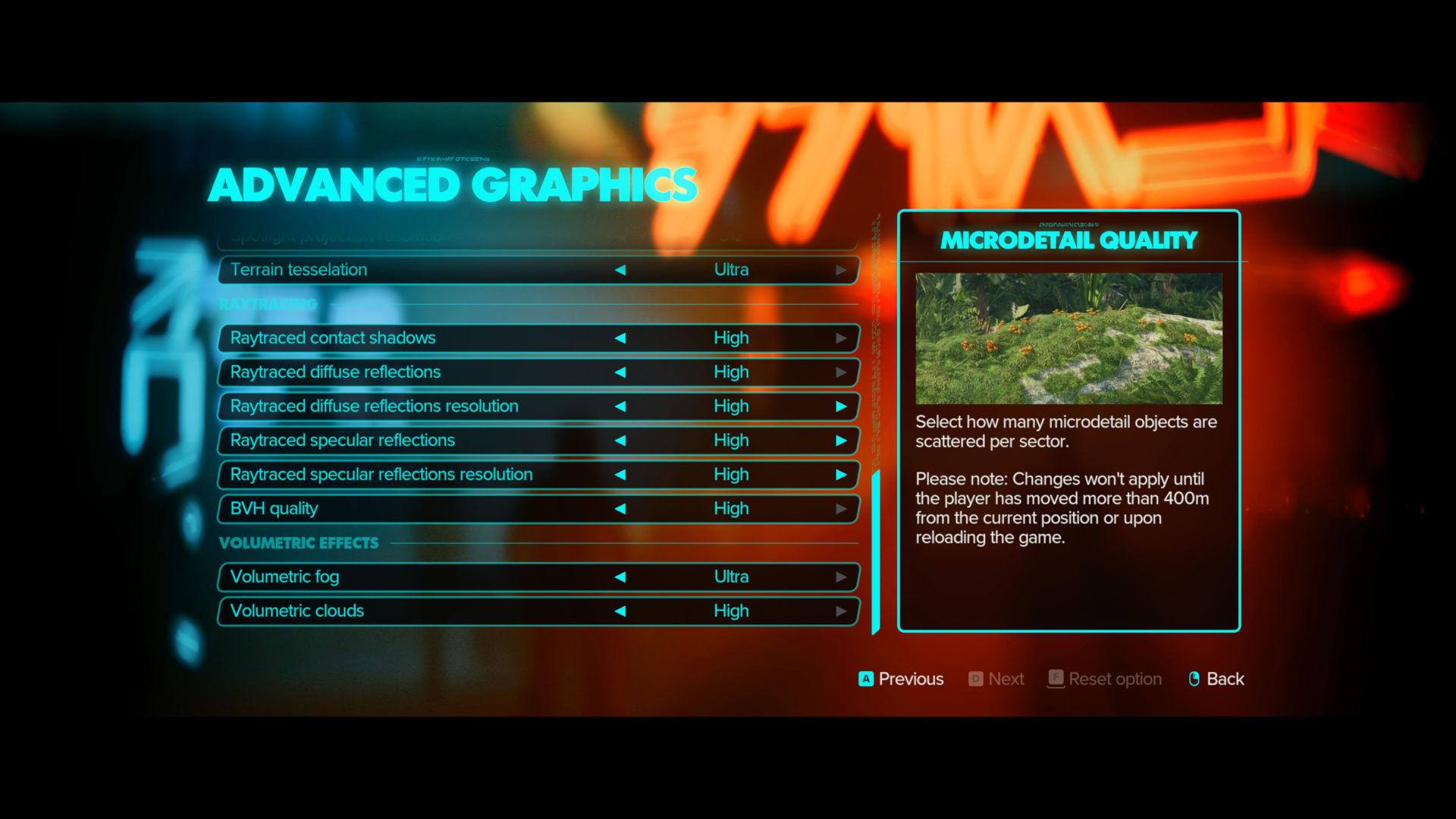
One thing that's not very clear is how ray tracing is managed on GPUs that only just meet the minimum system requirements. The GeForce GTX 1660 and Radeon RX 5600 XT aren't capable of hardware ray tracing acceleration so the game must be using some kind of software/hybrid fallback in such cases.
In fact, it's pretty unclear as to what ray tracing algorithms are being employed with each setting but generally speaking, when one looks at the visual differences between the four quality presets, the use of ray tracing seems to be quite subtle at low and medium, and really only kicks in at high and ultra.
Shadows look superb on ultra but the performance hit is quite large. In contrast, raising the visual fidelity of the lighting, geometry, and particle effects scales quite nicely. I'd recommend sticking to the high preset for the most part and lowering the shadows if you're struggling to reach a target frame rate.
I'd suggest using the medium preset with low shadow settings for PCs sporting GPUs without hardware ray tracing, even at 1080p, as the RX 5700 XT struggled to get anywhere near 60 fps in Stars Wars Outlaws.
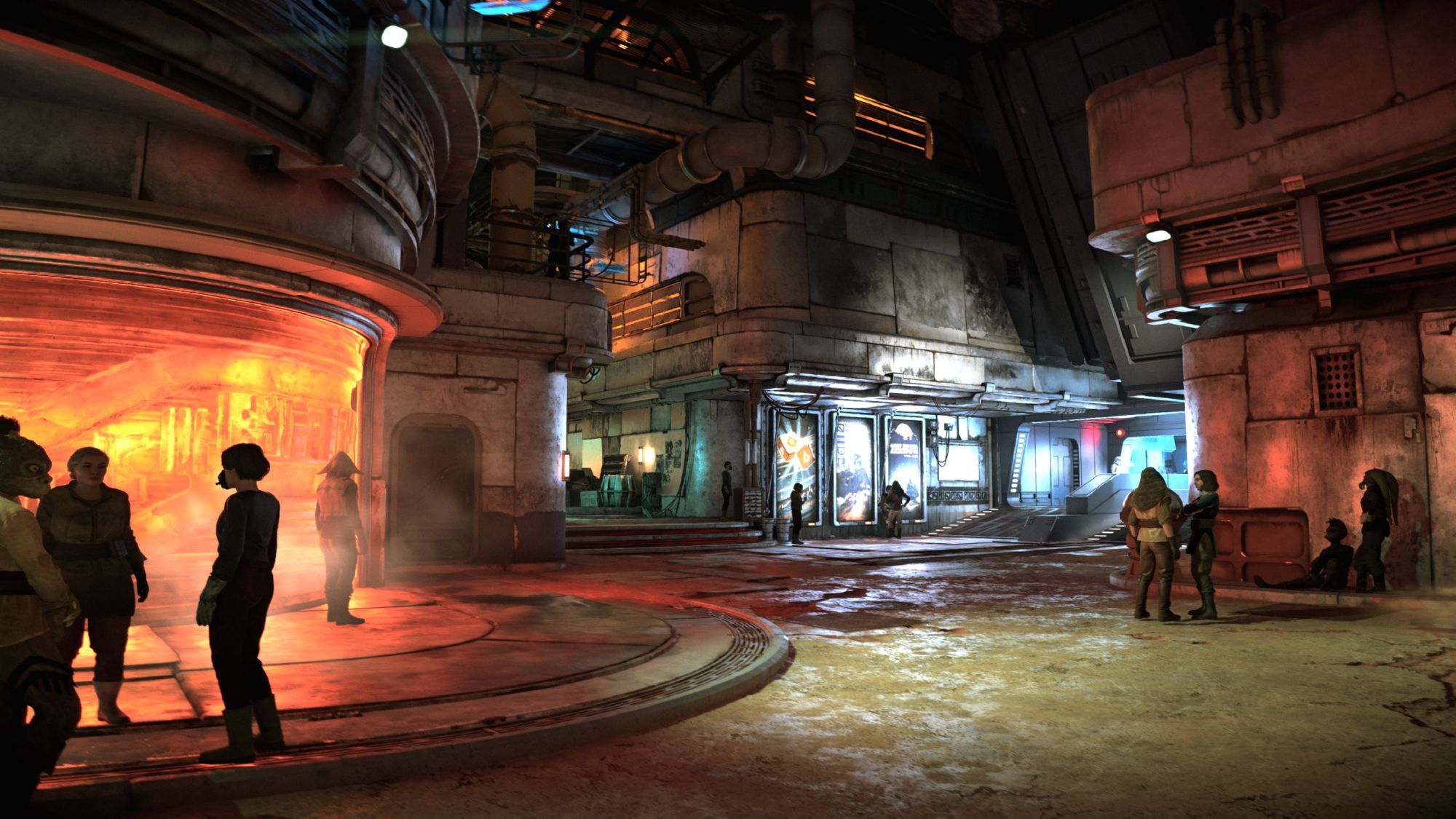
There's one setting that I haven't mentioned so far and it's the option to enable RTX Direct Illumination. This is an additional ray tracing API developed by Nvidia, though, despite its name, AMD and Intel GPUs can use it too. Where the standard ray tracing algorithm generates a little bit too much noise, especially on surfaces that have lots of straight lines, RTXDI on its ultra settings creates a near-perfect ray-traced image.
However, like frame generation, the implementation of it in the review version of Star Wars Outlaws wasn't recommended to be used and given that it more than halves the frame rate (even on an RTX 4080 Super) and induces horrendous stuttering, it's not hard to see why Ubisoft said this. If all of this is solved in time for the game's release, it could be an option worth enabling if you want the best possible graphics, but I suspect that performance impact will leave it as a setting for RTX 4090 owners only.
Overall, Star Wars Outlaws is a lovely-looking game, though not Cyberpunk 2077 or Black Myth: Wukong level, but like so many of today's big releases, upscaling and frame generation are mandatory for high frame rates. If you're happy with 60 fps, then depending on the hardware in your gaming PC, you might not require either but DLSS, FSR, and XeSS are still worth using just to lift the 1% lows and improve the anti-aliasing.







